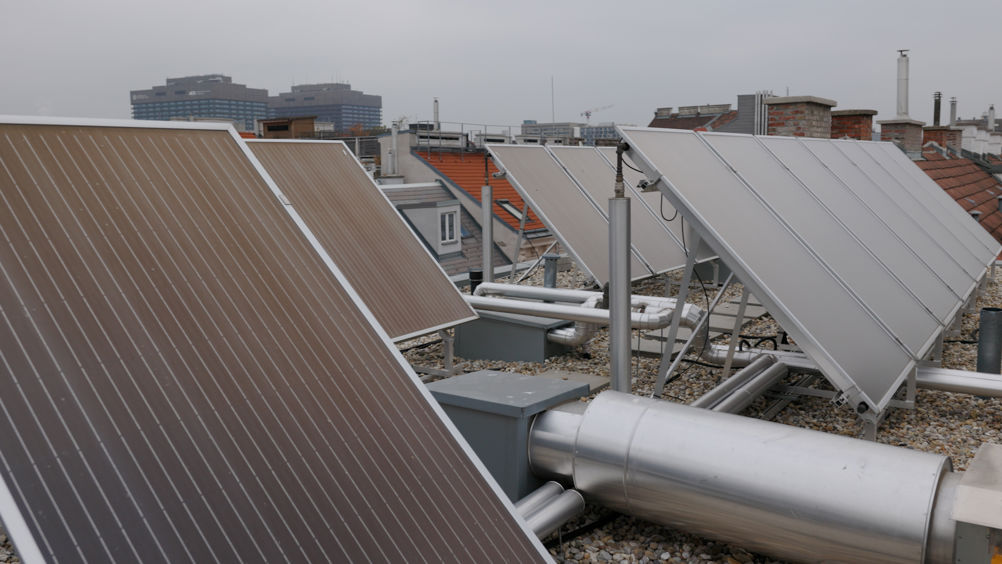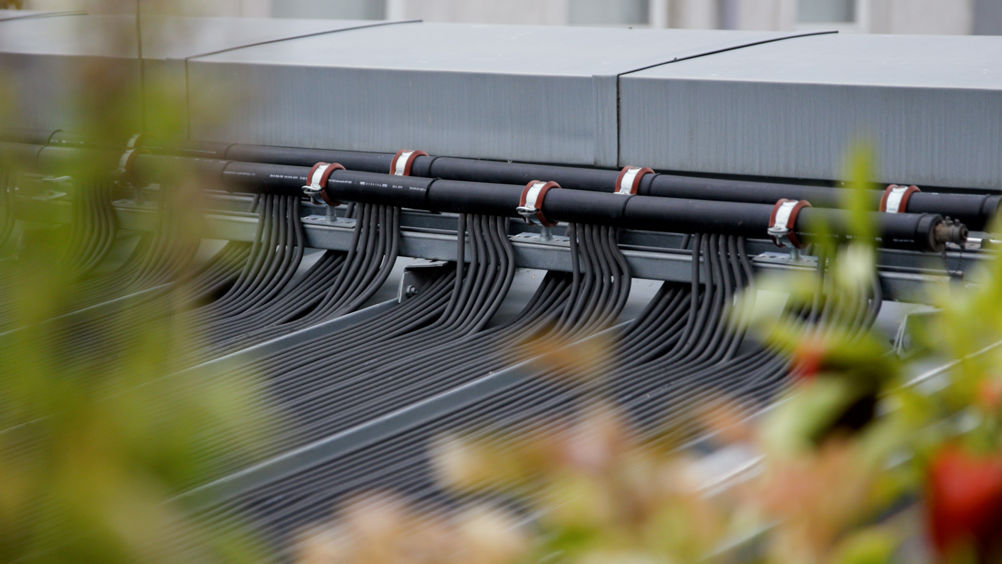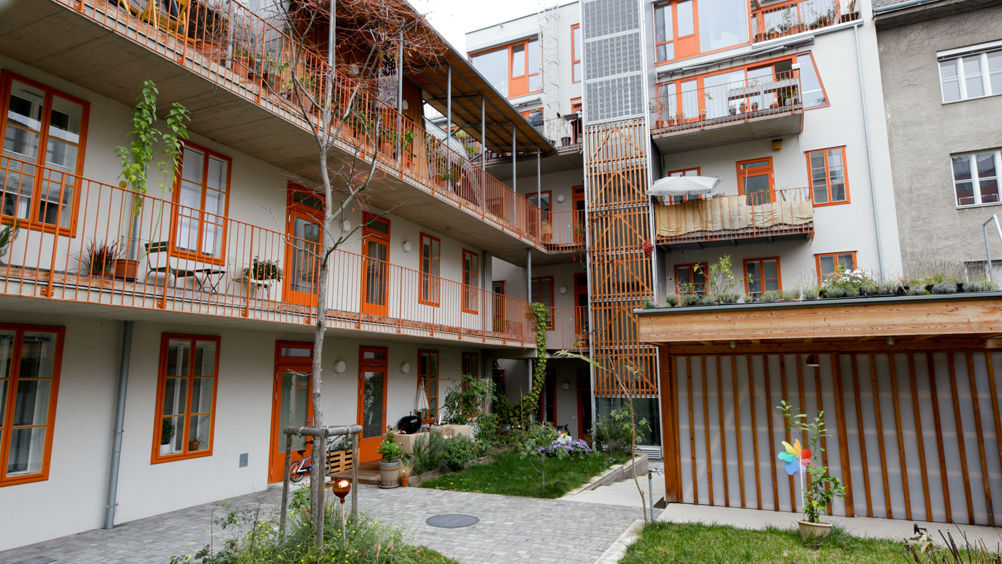The houses at Geblergasse 11 and 13 were built in the 1860s, just a few minutes away from the bustling city centre of Vienna. However, behind their white facades and orange windows lies the starting point for the pilot project ‘Smart Block Geblergasse.’ This project aims to integrate sustainable solar and geothermal systems, establishing a decentralised low-temperature heat energy network within a block of buildings.
According to European Commission figures, around 75 per cent of European buildings waste much of their energy. Since an estimated 85 to 95 per cent of existing buildings will still be standing in 2050, they will need to be upgraded. An improved construction approach in the EU could influence 42 per cent of our final energy consumption and around 35 per cent of greenhouse gas emissions.
The Austrian neighbourhood is one of six in Europe where the EU-funded Prolight project is investigating how to bring together innovative retrofitting technologies, new sustainable business approaches, and guidance from local citizens.

Solar energy is collected through a hybrid approach, using photovoltaic (PV) panels with an equal area of thermal solar cells. Transparent PV modules are also integrated into the elevator glazing, and thermal solar absorption mats on the roof of the garden wing.
Geothermal storage
The Vienna project has already won several environmental awards for its groundbreaking ideas, generating CO2-free cooling in the summer through its seasonal storage concept, 'Geothermal 2.0.'
When a hybrid solar-geothermal system (such as thermal solar panels together with geothermal heat pumps) generates heat energy, it is transferred to the thermal fluid circulating in pipes. The heated thermal fluid circulates through the piping system, transporting inherent heat energy to the ground. The soil acts as storage for the heat energy. When heat is needed, the thermal fluid is reintroduced into the islanding district heating system to recover the heat stored in the soil.

The buildings at Geblergasse proved to be ideal candidates for this system. After a soil and thermal response test showed good conductivity, eighteen boreholes were drilled to increase the field's capacity to fully utilise the property for the planned decentralised low temperature heat energy network. Connection lines were also laid to a third property to prepare for a future CO2-free supply for the building in a future renovation and expansion.
In the courtyard, the drilling axes were slightly inclined towards the building perimeters to energetically activate the soil beneath the structures, expanding the mass storage under the given spatial constraints in the densely populated existing city. The first renovated building has been heated using the Geothermal 2.0 method since October 2019. This modular system has been designed so it can integrate the eleven remaining unrenewed buildings in the future.
Underfloor heating
The apartments are equipped with underfloor heating connected to a reversible heat pump. This system allows for the extraction of excess summer heat from the building through the cooling process, which is then stored in the geothermal storage. The piping system works as a closed circulation system; water flows between the absorption surfaces on the roof, within the building, and the deep boreholes underground, constituting a closed circulation system operated and modulated by pumps and the Measurement, Control, and Regulation Technology system.
The electricity generated by the hybrid collectors on the buildings’ roofs is primarily used to supply the heat pump, the electricity and heat energy consumption of the common consumption points in the buildings, and light e-mobility in the bicycle storage.
A reversible brine-to-water heat pump covers the water and hot water needs of the heating system, provided through an 'island district heating system.' This system can operate independently and ensures decentralised continuous heat supply as an alternative to centralised district heating networks.
CO2-free cooling
The building’s climate control design also keeps the apartments warm in winter and provides CO2-free cooling in summer. Solar cooling technology harnesses the heat collected from the sun and converts it into practical cooling for various applications.

During the summer, the pipes and a reversible heat pump provide a consistently cool return flow of approximately 20°C. This can regulate the temperature of apartments in the summer through the underfloor heating system. Under specific parameters, the system can also operate in Free Cooling mode without using a heat pump.
For conventional air conditioning systems to be cost-effective and efficient, typically all windows and doors should be closed. They usually recirculate a lot of the existing air, leading to poor air hygiene. Smart Block Geblergasse apartments use extensive low-temperature systems of underfloor heating surfaces and partially used cooling ceiling panels to maintain a cool surface temperature even with doors and windows open. This is achieved without adversely affecting air quality and creates a pleasantly perceived indoor climate.
Improving energy efficiency in buildings has a crucial role in achieving the ambitious goal of carbon neutrality by 2050, as set out in the European Green Deal. In this pilot project, the primary energy savings are estimated at 58 per cent and the greenhouse gas emissions savings are about 66 per cent.











Guest blog: exploring opportunities for hydrogen combustion engines
"We wouldn't need to pillage the environment for the rare metals for batteries, magnets, or catalisers". Batteries don't use rare...